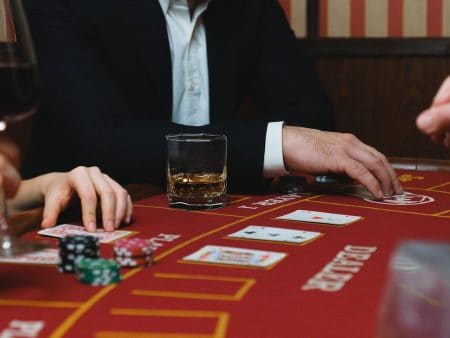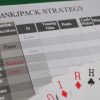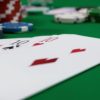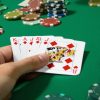Imagine a tense final hand where players struggle to reach chips, elbows bump, and cards slide off the edge. The culprit? A poorly sized poker table.
Poker table sizes aren’t just about physical space: they shape the pace, strategy, and social dynamics of every game.
Whether you’re hosting a casual home game or emulating casino-level play, selecting the right size ensures smooth dealing, betting, and camaraderie.
How and Why Poker Table Sizes Directly Impact Game Dynamics
Poker table sizes influence how players interact, strategize, and even perceive their opponents. A cramped table speeds up gameplay but risks clutter and discomfort, while a sprawling one slows the action, encouraging deliberate bluffs.
The distance between players affects communication; closer seating fosters casual banter, while wider setups create psychological distance.
For example, a 10-player table forces quieter, tactical play, whereas a 6-player table thrives on quick decisions and reads. Psychological studies suggest that proximity can amplify tension during high-stakes moments, as players feel physically closer to their rivals’ reactions.
This dynamic is why professional tournaments often use larger tables to simulate psychological pressure. What we mean by this is that, basically, winning poker games means understanding how poker table sizes affect players.
Small Tables (4–6 Players): Ideal for Fast-Paced, Intimate Games
Compact poker table sizes (typically 6–8 feet long) excel in fast-paced, social settings. With fewer players, hands conclude quicker, and everyone stays engaged.
This setup suits Texas Hold’em cash games or short-handed tournaments where reading opponents is easier. For instance, a 48-inch round table comfortably seats six, keeping chips and community cards within easy reach.
However, tight quarters mean that the accidental reveals of hole cards are more likely, so players must stay mindful. These tables also work well for beginners, as the smaller group size reduces intimidation and allows for clearer explanations of rules.
The intimacy of a small table can turn a casual game into a lively, interactive experience where every player’s move feels immediate and impactful.
Mid-Size Tables (7–8 Players): Balancing Strategy and Social Play
Mid-range poker table sizes (8–9 feet) balance strategy and sociability. These tables accommodate deeper stacks and multi-street betting without sacrificing player connection.
In games like Omaha, where hand complexity demands more deliberation, the extra space allows for clearer card placement. Meanwhile, the proximity still lets players pick up on physical tells.
Casinos often use 8-foot oval tables for mixed games, ensuring dealers have room to maneuver without isolating players. Mid-size tables are ideal for groups that blend serious players with social participants, as the setup accommodates focused strategy and lighthearted conversation.
This size adapts well to dining room conversions for home games, offering enough surface area for snacks and drinks without overcrowding.
Large Tables (9–10 Players): Managing Crowds in Tournament Settings
Tournament-style poker table sizes (10+ feet) prioritize logistics over intimacy. These tables, designed for 9–10 players, accommodate deep fields but require precise chip management.
The wider surface area means players must lean in to reach pots, slowing the game—ideal for events like the World Series of Poker, where patience and endurance matter.
However, casual groups may find the distance stifles interaction. For home tournaments, ensure chairs are spaced to avoid elbow clashes during all-ins.
Large tables also demand stronger lighting and dealer oversight, as extended seating makes misdeals and missed bets more likely.
Despite these challenges, the grandeur of a full table can elevate the atmosphere, making every hand feel like a high-stakes event.
Game Variations: Optimal Poker Table Sizes for Texas Hold’em vs. Omaha
Poker table sizes adapt to game rules. Texas Hold’em works well on smaller tables (6–8 players) since players only hold two hole cards.
With four hole cards per player, Omaha demands more space to prevent overcrowding. A 9-foot table suits Omaha’s card-heavy demands, reducing the risk of misdeals.
Similarly, Stud games benefit from oval tables, where up to eight players can track exposed cards without straining.
Mixed-game nights require versatile table sizes; for example, transitioning from Hold’em to Omaha might necessitate temporarily removing players or adjusting seating arrangements.
Understanding these nuances ensures that the game’s integrity remains intact, regardless of the variation being played.
Oval vs. Round Tables: How Shape Affects Player Psychology and Interaction
The shape of poker table sizes alters gameplay psychology.
Oval tables (standard in casinos) provide clear dealer and player zones, streamlining bets and community cards. Round tables, often used in home games, create equality—no “head” position—but limit seating to six players.
For instance, a 7-foot oval table seats eight comfortably, while a 6-foot round table maxes out at six.
Choose an oval table for structured tournaments and a round table for casual, conversational play. Oval tables also simplify dealer tasks, as the elongated design allows for easier card distribution and pot collection.
Round tables, meanwhile, foster a communal vibe, making them ideal for relaxed games where conversation is as meaningful as the cards.
How Casinos Choose Poker Table Sizes
Casinos optimize poker table sizes for profit and efficiency. A standard 8-foot oval table fits eight players, balancing revenue per square foot and comfort.
High-stakes areas may use 9-foot tables for exclusivity, while electronic tables shrink to 7 feet for hybrid games.
Notably, casinos avoid overcrowding; the World Poker Tour mandates 40 inches of space per player to prevent collusion and ensure dealer accuracy.
Luxury resorts like the Bellagio often customize tables for televised events, adding extra padding and width to accommodate cameras without disrupting play. These decisions reflect a blend of practicality and spectacle, ensuring games run smoothly while maintaining a premium aesthetic.
Blind Structures and Poker Table Size: Adjusting for Player Proximity
Blind levels often correlate with poker table sizes. Smaller tables accelerate blind increases due to faster hand cycles, which is suited to turbo poker tournaments. Larger tables, with slower action, pair well with gradual blind structures.
For example, a 6-player table might double blinds every 20 minutes, while a 10-player table extends to 40 minutes. Adjust your structure based on table size to maintain game flow and prevent player fatigue.
In home games, flexible blind schedules can accommodate varying table sizes—aggressive structures for compact setups and relaxed timers for sprawling layouts.
This adaptability keeps the game engaging, whether you’re hosting a quick after-dinner round or an all-night marathon.
Aligning Poker Table Size with Your Group’s Play Style
Selecting the ideal poker table size requires the consideration of several factors. The number of participants is the first concern, as each player should have at least 12 to 18 inches of personal space to avoid feeling cramped.
The type of poker being played also plays a role—Omaha and Stud games benefit from larger surfaces to accommodate extra cards. Space availability is another important factor; ensuring enough room for players to move their chairs comfortably can make a significant difference in overall enjoyment.
For those aiming to replicate the feel of a casino, an eight-foot oval table provides the versatility needed for a variety of poker formats. However, a smaller round table may be the best choice if casual games and a more intimate setting are the priority.
Regardless of the setup, the goal is to enhance the overall poker experience, allowing for smooth gameplay and enjoyable competition.
















